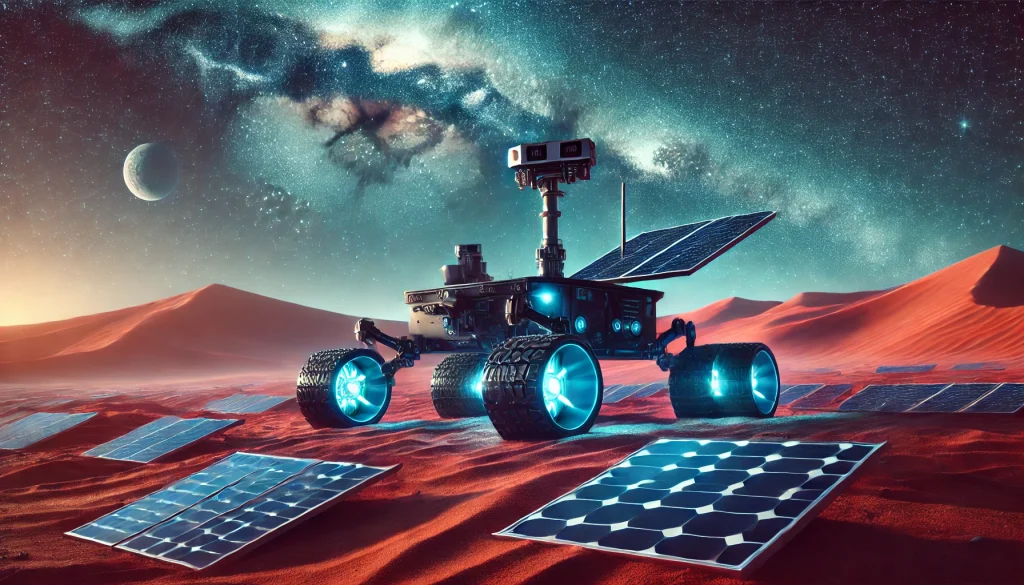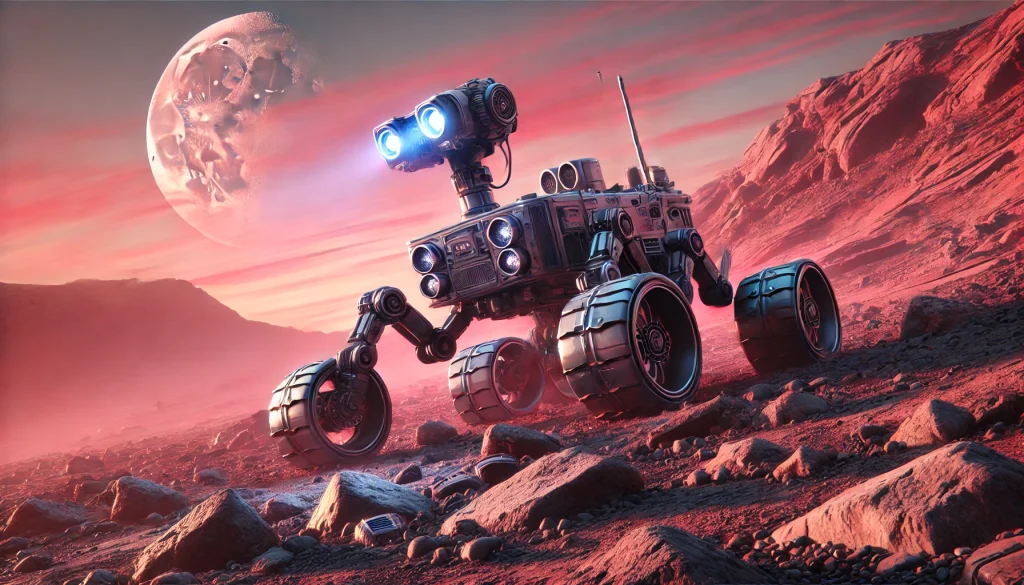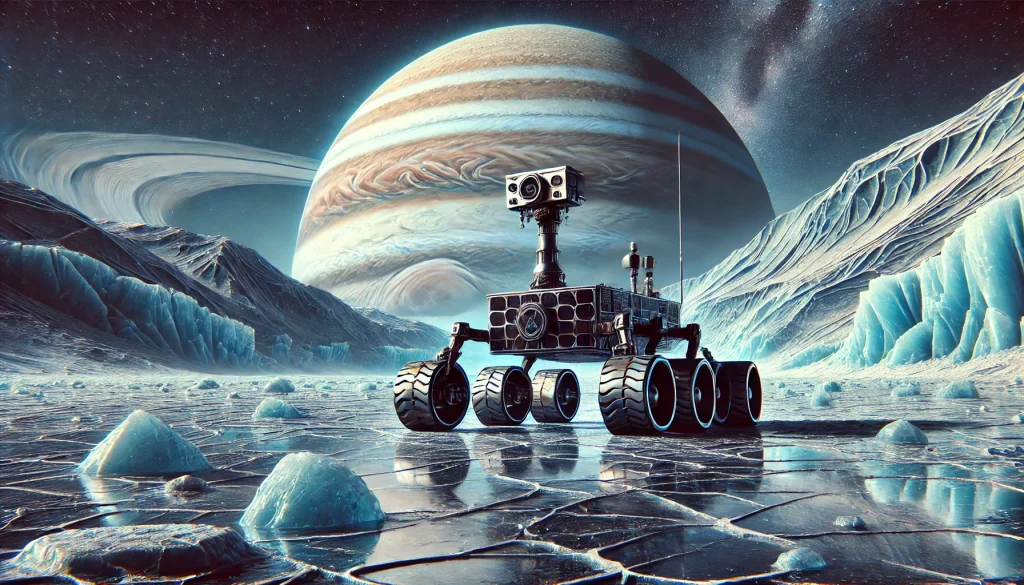
Overview
In the fast-evolving world of space technology, space exploration rovers stand as pioneering agents of innovation. These highly engineered robots are designed to traverse the harsh landscapes of distant planets, moons, and asteroids, gathering invaluable data that deepens our understanding of the universe. The technological advancements driving these rovers have made it possible to explore remote parts of our solar system, previously considered unreachable. With new missions launching in 2024 and breakthroughs in artificial intelligence, autonomous systems, and robotics, these machines are redefining the boundaries of space exploration.
In this article, we’ll delve into the importance of space exploration rovers, recent technological breakthroughs, their integration into other fields, and the challenges faced in pushing the limits of this technology.
Recent Breakthroughs in Space Exploration Rovers
September 2024 has brought about several exciting developments in space exploration rover technology. Japan, for instance, is gearing up for a groundbreaking mission to send a rover to Phobos, the moon of Mars. This mission marks a significant step in space exploration and planetary defense. Japan’s Phobos rover will collect samples from the moon’s surface, testing the limits of space rover endurance on a smaller celestial body with lower gravity and different terrain .
At the same time, NASA continues to expand its Mars rover missions with the well-established Curiosity Rover, which remains one of the most successful rovers in space history. Recent updates indicate that Curiosity is now exploring uncharted regions of Mars, contributing to new scientific discoveries about the planet’s past, including signs of ancient rivers and potential microbial life . Moreover, the Mars 2020 Perseverance rover is utilizing advanced technology, such as a helicopter companion (Ingenuity) to cover more ground and take aerial images of Mars’ surface, leading to more efficient mission execution.
Despite some setbacks, such as the cancellation of NASA’s Lunar Polar Exploration Rover, which was intended to explore the moon’s south pole , the overall progress in space rover technology continues to make strides forward. Artificial intelligence and machine learning are playing a key role, allowing rovers to make real-time decisions and navigate autonomously in highly unpredictable terrains. These innovations ensure that space rovers are not only tools for data collection but also problem solvers capable of handling unexpected challenges.
Emerging Applications for Space Exploration Rovers

The capabilities of space exploration rovers are expanding beyond planetary exploration, with new applications emerging in fields such as space mining and planetary defense. Mining asteroids for valuable resources is no longer the stuff of science fiction. In fact, rover-based space mining is now considered a viable method for accessing rare metals like platinum and palladium. The European Space Agency (ESA) is actively researching the use of autonomous robots to extract these materials from asteroids, with trials planned for 2024.
Additionally, rovers have become essential tools in planetary defense. The mission to Phobos is part of a broader strategy to understand how asteroids and moons could potentially collide with Earth. By studying Phobos up close, scientists can model the dynamics of its orbit and make better predictions about asteroid paths, helping to prevent future catastrophes .
Integration with Other Technologies
The integration of space exploration rovers with other cutting-edge technologies, such as robotics, AI, and 3D printing, has significantly improved their functionality and versatility. The Mars Perseverance Rover is a great example of this, as it includes a laser-powered instrument (SHERLOC) that can analyze rock formations to detect signs of ancient life . Coupled with machine learning, this rover can prioritize samples for collection, ensuring mission objectives are met efficiently.
Furthermore, new developments in 3D printing technology have the potential to revolutionize space missions. Imagine future rovers landing on the moon or Mars equipped with 3D printers capable of manufacturing spare parts on-site. This would extend their operational lifespan, reduce the cost of missions, and make space exploration more sustainable in the long run.
Another exciting integration is the Mars helicopter, Ingenuity, which operates alongside the Perseverance Rover. Ingenuity represents the first instance of powered flight on another planet and serves as a prototype for future aerial explorers that can assist rovers in identifying points of interest on the surface . This kind of collaboration between ground and aerial robots showcases how technology convergence is essential for the next phase of space exploration.
User Experience and Improvements in Rover Design

Recent improvements in the design and functionality of space rovers aim to enhance user experience for mission control teams on Earth. Rover interfaces are becoming more intuitive, with advanced algorithms providing real-time feedback that allows scientists to make more informed decisions. This real-time data helps scientists optimize mission objectives while considering the challenges posed by distance, time delays, and harsh environments.
Another significant upgrade is in rover mobility systems. Rovers like NASA’s Curiosity and Perseverance now feature advanced suspension systems and adaptive wheels, enabling them to traverse complex terrains with greater agility. These innovations ensure that rovers can reach difficult-to-access areas on other planets, improving the quality and quantity of data collected during missions.
Challenges in Space Exploration Rover Technology
Despite these advancements, space exploration rovers continue to face several challenges. The harsh conditions on other planets, such as extreme temperatures, high radiation levels, and unpredictable terrain, present significant obstacles to rover durability. Developing materials that can withstand these conditions without compromising performance remains a priority for engineers.
Another major challenge is energy efficiency. Solar-powered rovers, like those on Mars, rely on sunlight to recharge their batteries, but dust storms and long nights can hinder their ability to function for extended periods. Nuclear-powered rovers have been explored as an alternative, but they bring their own set of technical and ethical considerations.
Finally, the cost of deploying space exploration rovers remains high, although technological advancements and increasing interest from private space companies may eventually lower these barriers.
Conclusion
Space exploration rovers represent a remarkable intersection of engineering, robotics, and cutting-edge technology, propelling humanity further into the final frontier. With each new mission, these advanced machines uncover data that enriches our understanding of the solar system, from analyzing the surface of Mars to providing insights into potential threats posed by asteroids.
The breakthroughs in September 2024—particularly the anticipated Phobos mission—illustrate how far rover technology has come and the exciting potential for future applications in space mining, planetary defense, and more. The continuous integration of AI, 3D printing, and autonomous navigation systems into rover design promises to push the boundaries of exploration further than ever before.
Space exploration rovers will remain at the forefront of technological innovation as they help solve some of humanity’s greatest mysteries. Encouraging investment and continued research in this field will ensure that these extraordinary robots continue to serve as our eyes, ears, and hands in space, forging new paths for discovery.
FAQs
What is the primary purpose of space exploration rovers?
Space exploration rovers are designed to traverse extraterrestrial surfaces, collect data, and conduct scientific research to understand other planets better.
What are some current challenges for rovers?
Space exploration rovers face challenges such as extreme environmental conditions, limited energy sources, and high deployment costs.
How are rovers improving in 2024?
Recent improvements include better AI for navigation, 3D printing capabilities for on-site repairs, and more efficient energy systems.
Resources
- NASA Science. Mars Science Laboratory | Latest Curiosity Updates.
- Planetary Society. Every Mars Mission | Mars Rover Spirit and Opportunity.
- New Scientist. Japan’s Phobos Rover | Updates for September 2024.
- Space and Defense. NASA Cancels Lunar Polar Rover | September Announcement.
